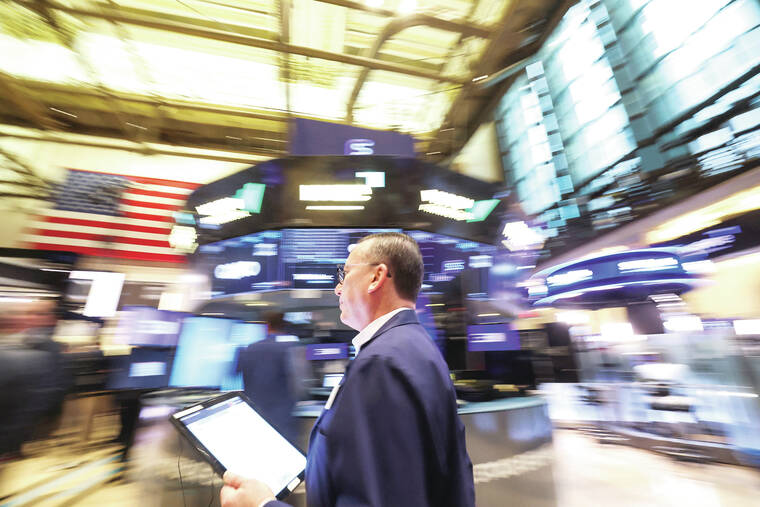Markets slide as Trump renews attacks on Fed chair
Stocks slumped, bonds sold off and the U.S. dollar continued to lose ground Monday as President Donald Trump renewed his attacks on Jerome Powell, the chair of the Federal Reserve, unnerving already-anxious investors who see the independence of the central bank as critical to the health of the American economy.
Wall Street began the day with a slump, but the sell-off gained steam after Trump targeted Powell in a social media post, calling him “a major loser” and urging the Fed to cut interest rates. Trump also suggested that an economic slowdown would be Powell’s fault.
ADVERTISING
After a late recovery, the S&P 500 dropped 2.4% for the day. All of the major sectors in the index fell, with the technology, energy and consumer discretionary sectors hardest hit.
The president’s attacks on Powell add to uncertainty that has already been injected into financial markets by the chaotic rollout of tariffs and threats of more to come, said John Mowrey, chief investment officer at NFJ Investment Group.
“There’s a slew of things that could be very unsettling to the market as it tries to navigate what it doesn’t really know how to navigate, which is policy uncertainty about tariffs,” Mowrey said, adding that “Powell is one of them.”
The Trump administration has acknowledged an uptick in the probability of a recession. Trump’s criticism of Powell, Mowrey said, signals an effort to “have the cards ready to blame other people should that occur.”
Trump had also lashed out at Powell last week, saying to reporters Thursday that “if I want him out, he’ll be out of there real fast — believe me.”
A day earlier, the Fed chair had warned in a speech that tariffs could create a “challenging scenario” by putting the central bank’s two main goals — stable inflation and a healthy labor market — in tension.
Stock investors tend to favor lower interest rates, which make it easier for companies to borrow and expand their businesses. Share prices often rise when investors expect the Fed to cut rates — even if it is the result of bad economic news. But the recent market reaction to Trump’s calls for lower rates suggests that investors see the threat to Fed independence as outweighing any benefit from rate moves.
Trump is said to be wary of trying to oust Powell before the end of his term as chair next year, which would probably inject even more volatility into already jittery markets. The political independence of the Fed is seen as critical across world financial markets, and threats to that independence have made investors anxious about the stability of assets priced in dollars, long considered a safe and reliable place to park money.
That includes U.S. government bonds, which have emerged as a major concern for Wall Street and the White House, as they’ve tumbled in recent weeks. On Monday, they showed renewed stress, with the yield on 10-year Treasury notes jumping above 4.4% as investors sold the bonds. (Yields move inversely to prices.)
The U.S. dollar continued its slide against nearly every other major currency Monday. It fell about 1% against the euro, to the lowest level in more than three years. The dollar also fell against the Japanese yen, to its lowest level since September.
On the surface, a weaker dollar makes American goods cheaper overseas, and imports more expensive. But a substantial shift could signal that investors are moving away from a decades-long belief that the dollar and U.S. assets are a safe haven, and they are instead choosing to put their money elsewhere.
“We believe dollar weakness will continue,” Win Thin, a managing director at Brown Brothers Harriman, said in a note. He added, though, that recent gains in some currencies might not last because economic growth was likely to weaken.
© 2025 The New York Times Company





